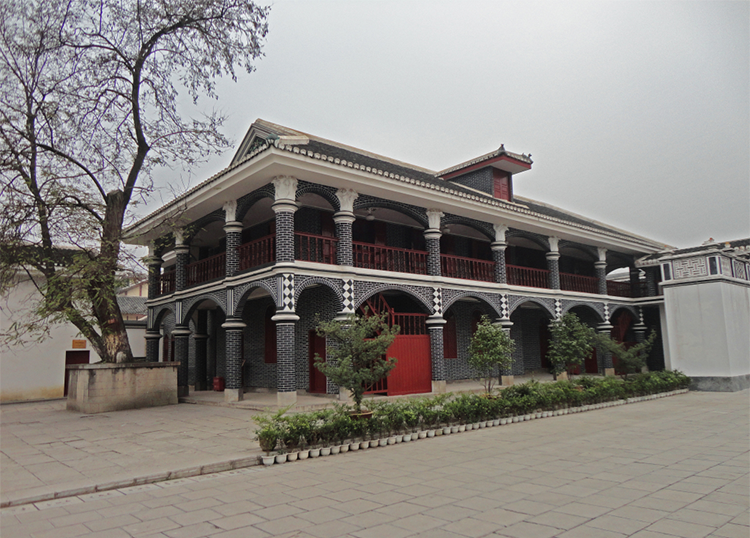Zunyi Conference Memorial: A Key Long March Site and China’s Turning Point
Zunyi Conference Memorial: China’s Turning Point
Opening the weathered wooden door feels like stepping back to the cold winter of 1935. In this two-story brick-and-wood house—an elegant East-meets-West structure—a meeting altered the course of modern China. The Zunyi Conference was a life-or-death turning point in Communist Party history. The Zunyi Conference Memorial is more than a museum: it is a living historical site. Walk the rooms, touch the original tables and chairs, study the yellowing documents, and you can almost hear the heated debates that once echoed here. This red heritage site offers a key to understanding how modern China emerged.
1. Core features and positioning
The Zunyi Conference Memorial is China’s only national first-class museum named specifically for a conference. It is positioned as a revolutionary-history memorial dedicated to one decisive meeting. Its essence can be summarized as: “a red pilgrimage site witnessing the Communist Party’s great turning point.” Unlike conventional museums, it emphasizes an immersive “original site + artifacts + scene reconstruction” experience that invites visitors to literally walk into history.
2. Historic architecture and status
Built in the 1930s, this two-story house blends Western and Chinese styles. Once the private residence of a Nationalist regiment commander, the building features brick-and-wood construction, gray-tiled roofs, and arched windows that reflect Republican-era aesthetics. Established at the original conference site in 1955, the memorial now covers about 40,000 square meters and includes the meeting venue, exhibition halls, and the former Red Army General Political Department compound. As a nationally protected cultural relic and an AAAAA-level scenic spot, it was named a model case of national red-tourism development in 2021 and serves as a living textbook for the study of the Chinese revolution.
3. Treasures and key exhibits
– Meeting venue in situ: Pinewood tables and chairs, cast-iron lamps, and enamel tea cups are original items used during the conference. The wear on the tabletops invites imagination about long, overnight debates involving Mao Zedong, Zhou Enlai, and others.
– Replica of the Zunyi Conference resolution manuscript: The crucial document that consolidated Mao’s leadership is displayed under glass; the yellowed paper and fountain-pen script remain legible.
– Red Army flags and implements: Spears, homemade firearms, and straw sandals silently speak of the Long March’s extraordinary hardships.
4. Exhibition narrative and learning experience
The exhibition is organized into three major sections—Strategic Withdrawal, Historical Turning Point, and Campaigns Through Guizhou—clearly mapping the six months before and after the conference. High-tech displays complement traditional exhibits: dynamic maps trace the Red Army’s crossings of the Chishui River, and an immersive theater reconstructs portions of the conference debates. Visitors leave with a clear sense of why this meeting is credited with rescuing the Party, the Red Army, and the revolution.

5. Atmosphere and visitor profile
The site balances solemn reverence with serene garden-style grounds. Visitors are mainly domestic study groups and Party-history researchers, though foreign scholars and interested international travelers are increasingly common. Mornings are quieter; afternoons often host educational groups. To enjoy the site with fewer crowds and deeper reflection, plan an early visit.
6. Practical tips (foreign traveler edition)
– Tickets and registration: Free entry, but passport registration is required at the entrance. During peak season (July–October), book one day in advance via the memorial’s official WeChat account.
– Language support: English audio guides are available for a deposit of 200 RMB. Key exhibits have bilingual captions; the information desk can assist with basic English inquiries.
– Recommended routes:
– Quick route (1 hour): Original meeting venue → core first-floor exhibition → former Red Army General Political Department.
– In-depth route (3 hours): Include Deng Xiaoping’s former residence and Red Army Street; rent an AR device (approx. 50 RMB) to unlock additional stories.
– Getting there: From Zunyi High-Speed Railway Station take Bus 26 to ‘Conference Memorial’ station, or a taxi ride of about 15 minutes (around 20 RMB). The site has no dedicated parking lot; self-driving visitors should use nearby commercial parking.
7. Local insider tips
– Hidden photo spot: The third-floor terrace offers a panoramic view of the complex—perfect for photographing gray-tiled roofs and distant hills.
– Nearby highlights: A 10-minute walk brings you to Red Army Street, where you can taste Zunyi mutton rice noodles and view Long March story reliefs carved into the walls.
– Avoid pitfalls: Closed on Mondays (except public holidays); selfie sticks are banned inside, and flash photography is prohibited in artifact areas.
8. Reflection and invitation
Standing in the courtyard where sunlight filters through an old locust tree onto blue stone slabs, history feels remarkably close. Whether you are a history buff, political scholar, or an international traveler eager to understand China, the Zunyi Conference Memorial offers an experience that transcends textbooks. Add this red heritage site to your Guizhou itinerary and let 88 years of courage and strategy become a profound chapter of your journey.

Visitor basics
– Name: Zunyi Conference Memorial (original site + exhibition halls)
– Address: No. 96 Ziyin Road, Honghuagang District, Zunyi, Guizhou Province
– Opening hours: 8:30–17:00 (last entry 16:30)
– Official website: zyhyjng.cn (use your browser’s translate feature if needed)


